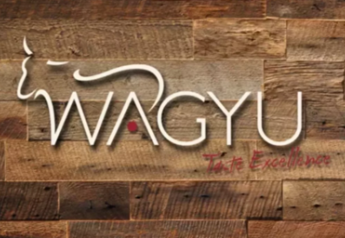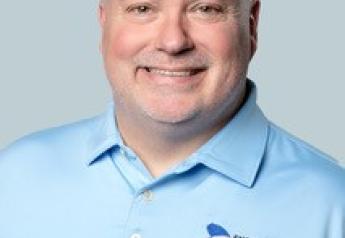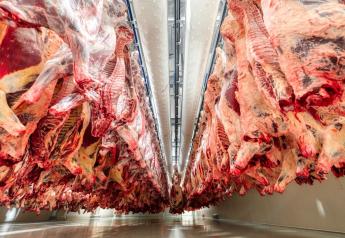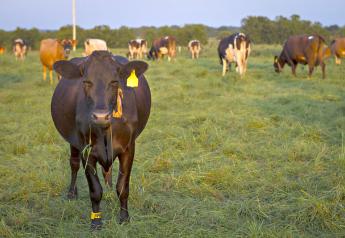JBS to Sell Five Rivers Cattle Feeding for $200 Million
1/19/18 JBS Divests of Feedlot Operations
JBS USA plans to sell Five Rivers Cattle Feeding to Pinnacle Asset Management, L.P., for approximately $200 million. Pinnacle Asset, an investment firm specializing in commodities and natural resources, made the announcement on Jan. 17 in a press release.
Five Rivers Cattle Feeding includes 11 feedlots and has a total feeding capacity estimated at 980,000 head of cattle, making it the largest cattle feeder in the world. The feeding operation traces its roots back to the 1920s with the Monfort family and now has yards in Arizona, Colorado, Idaho, Kansas, Oklahoma and Texas.
As part of the purchasing agreement Five Rivers Cattle Feeding will continue to supply cattle to JBS USA's beef processing plants. The current Five Rivers management team is to remain intact, with president and CEO Mike Thoren staying in his lead role.
“The sale of the Five Rivers Cattle Feeding assets and farms is a strategic move that will allow JBS USA to more efficiently deploy working capital and focus on the company’s core food and value-added products businesses,” said Andre Nogueira, CEO of JBS USA.
Representatives affiliated with Pinnacle Asset voiced their pleasure with the agreement.
“The acquisition of the largest and most respected cattle feeding operation in the world continues Pinnacle's strategic path of investment and development of our diversified, global, physical commodity platform, of which livestock is a critical sector,” said Jason M. Kellman, managing partner and Chief Investment Officer of Pinnacle Asset Management. “We are excited to work closely with our operating partner, Arcadia Asset Management and strategic partner, Ospraie Management to support Five Rivers’ talented management team.”
“Ospraie is pleased to partner with Pinnacle and Arcadia on this market-leading, commodity transaction,” said Jason Mraz, president of Ospraie Management, who is a strategic partner to Pinnacle on this transaction. “We have a long history of working together and have great respect for both partners’ expertise in physical commodities.”
“We are excited to combine Arcadia’s livestock marketing and risk management experience with the first-class management team at Five Rivers,” said Jordan Levi, managing member of Arcadia Asset Management, LLC. “We believe that the complementary strengths of Pinnacle, Arcadia, Ospraie and Five Rivers will create significant value. We look forward to continuing the legacy of best-in-class production, livestock care and animal welfare, and environmental stewardship established by the more than 600 skilled professionals who comprise the Five Rivers Cattle Feeding team.”
JBS’s sale of Five Rivers Cattle Feeding is part of a divestment program that was announced last summer.
The divestment of $1.8 billion from JBS S.A. holdings started after the Batista brothers, majority owners JBS's holding company J&F Investimentos, were assessed a leniency fine. The fine of $3.2 billion was for their involvement in a bribery scheme with Brazilian government officials and politicians. Following the bribery scandal Wesley and Joesley Batista were both formally accused of insider trading by Brazilian police. The bothers allegedly made illegal trades prior to arranging a plea deal for their admission to bribery.
As part of the divestment plan JBS also sold off Five Rivers Cattle Feeding in Canada which included a 75,000 head feedlot and sold for nearly $40 million.
According to Nogueira the transaction completes the company’s divestment plan.
“The long-term partnership with Pinnacle will ensure JBS USA’s continued ability to produce high-quality beef products, including natural, certified humane, raised without antibiotics, source-verified and traditional products, enjoyed by customers and consumers around the world,” Nogueira said.
The acquisition is still pending a U.S. regulatory review and approval, along with approval from the JBS S.A. Board of Directors and Pinnacle Asset securing the relevant funding.
Until the sale is approved JBS Five Rivers will continue to operate as usual. JBS USA will also maintain purchasing agreements with feedlots associated with Five Rivers Cattle Feeding.
This is the second major shakeup to a large U.S. packer-feedlot operation in the past year. In April 2017, Cargill sold its two remaining feedlots to Green Plains Inc. If the sale of Five Rivers is finalized it would mean that none of the three largest beef packers (JBS, Tyson Foods and Cargill) have ownership of a cattle feeding operation.
Below is an interactive map showing all of the Five Rivers Cattle Feeding lots across the country. Click the map to visit the JBS site to learn more about each feedlot:








